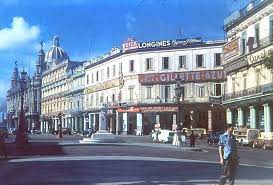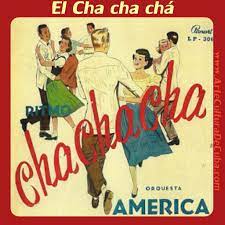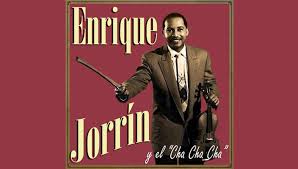LA ESQUINA DE PRADO & NEPTUNO, LA HABANA, CUBA y “LA ENGAÑADORA” EN EL ESTRENO DEL CHA..CHA..CHA..
A Prado y Neptuno… Iba una chiquita
que todos los hombres la tenían que mirar….
Así comienza una de las canciones más famosas y emblemáticas del Chachachá, un ritmo auténticamente cubano que hizo popular a esa esquina de la Habana, Cuba y que a la vez amenizó los bailes en las tardes y noches habaneras. «La Engañadora» es una conocida canción compuesta por el cubano Enrique Jorrín, en 1948, que sentó las bases musicales de ese ritmo cubano, el Cha..Cha..Cha..!.
Lo interesante es que inmortalizó, a la vez, a la esquina habanera otrora lugar de grandes salones de baile de las asociaciones Silver Star, ubicada en la misma esquina de Prado y Neptuno. En la Cuba de entonces había unas 10,000 vitrolas musicales y 100 emisoras de radio y varios canales de televisión listas para hace estallar el nuevo ritmo para disfrute del entonces pueblo cubano.
CON ENRIQUE JORRÍN Y SU CHA.. CHA.. CHA..
A este milagro musical de entonces se le llamó cha-cha-chá y su creador no fue otro que el director musical de esta orquesta y primer violinista, el maestro Enrique Jorrín, quien dejara inscrito, más que un género, su sello propio, y que le colocaría entre las glorias de la música cubana.
El experimento se gestó en la famosa esquina habanera, en las asociaciones “Prado y Neptuno” y “Silver Star”, en uno de sus salones de baile, “Amores de Verano”. Es precisamente en esta sala donde por primera vez se ejecuta la pieza musical que comenzaría toda una época del fenómeno rítmico.
“La Engañadora”, el primer número musical en cha-cha-chá escrito por Jorrín, deja en pocos meses impreso en los anales nacionales, y después en todo el mundo, el sello propio de esta gloria de la música cubana que fuera Enrique Jorrín.
VIDEOS- ENRIQUE JORRÍN Y SU ENGAÑADORA…
El famoso numero musical comienza asi…
“A Prado y Neptuno
iba una chiquita
que todos los hombres la tenían que mirar
Estaba gordita,
muy bien formadita,
era graciosita,
en resumen, colosal”.
Un ritmo pegajoso y atractivo el cha-cha-chá, según explica el mismo Jorrín… En él “combiné figuras simples, como las negras, blancas y corcheas en compás de 2/4. Suprimo el cinquillo, convirtiendo el ritmo básico del género al esquema no sincopado ejecutado por el guayo, el cencerro y la tumbadora”.
A mas medio siglo del triunfo mundial del cha-cha-chá, echemos una ojeada sobre este ritmo popular que recorrió el mundo e inmortalizó a una de las esquinas más famosas de La Habana, y que puso a La Habana otra vez en la cadencia musical de sus intérpretes y bailadores desde Buenos Aires hasta Tokio, donde el maestro Enrique Jorrín lleva su música.
Y QUIEN FUE “LA ENGAÑADORA” ?…..
¿De dónde salía aquella mujer que puso el mundo a gozar y convirtió a la famosa esquina Prado y Neptuno en el foco musical de toda una época..? ¿Cuál es el origen de la Engañadora..?
Según algunas fuentes, el maestro Jorrín se inspiró en una muchacha que un día pasó ante él y un grupo de hombres que conversaban en la esquina de las calles Infanta y Sitios, en La Habana. Ante el desprecio con que la muchacha les miró, uno de los admiradores le dijo: “Tanto cuento y cuando viene a ver son de goma”. En otra ocasión en que Jorrín se encontraba en el desaparecido salón de bailes situado en la esquina de Prado y Neptuno, entró una muchacha delgadita pero que ostentaba un voluminoso trasero. Una moda artificial muy usual en la época. Enseguida le pasó por la mente la pregunta: “¿Esta será otra engañadora? ¿Usará postizos?”.
Otras fuentes dan como inspiración de “La Engañadora” a Manolo Maylán (un famoso travesti cubano). Maylán fue objeto en la ciudad de Miami de un “incidente de confusión” por parte de un ciudadano norteamericano que, cultivado por sus “virtudes femeninas”, le propuso matrimonio. Al enterarse de la verdad, el confundido pretendiente la quiso emprender a tiros contra Maylán… Simplemente se trataba de “un hombre confundido”, manifestó Maylán ante preguntas de los periodistas de la prensa habanera que recogieron el incidente como “un drama pasional”.
Lo cierto de todo esto es que el ritmo y “La Engañadora” conquistarían en poco tiempo todo el continente, el mundo bailaba el majestuoso cha-cha-chá, que hoy se mantiene saludable, lleno de vida y de energía como sólo un ritmo del trópico y la creación del maestro Jorrín pudieran alcanzar.
Aún vivía hasta hace muy pocos años en Pueblo Nuevo, La Habana, Agueda Álvarez, a quien se le considera la bailarina que inventó los pasos del cha-cha-chá: uno, dos, tres; cha… cha… chá, y que sirvió como la primera modelo de “La Engañadora”, acompañando en teatros y salones de baile alrededor del mundo a la Orquesta América y a Enrique Jorrín.
“Pero todo en esta vida,
Se sabe, sin siquiera averiguar,
Se ha sabido que sus formas,
Rellenos tan sólo hay.
Qué bobas son las mujeres
que nos quieren engañar.
Me dijiste…..!
Y asi termina..
Ya nadie las mira,
Ya nadie suspira,
Ya sus almohaditas
Nadie las quiere apreciar.
En aquel entonces en Cuba había 10.000 vitrolas, alrededor de 100 emisoras de radio, varios canales de televisión —por donde se emitían magníficos programas como “El Cabaret Regalías” de la CMQ— y un sinnúmero de locales y establecimientos donde se reunía el pueblo para escuchar música y bailar.
“La Engañadora” fue el primer triunfo del maestro Jorrín grabado con el sello Panart, compañía que pasaba por problemas financieros en esos momentos. La grabación traía del otro lado “Silver Star”, que acompañó triunfalmente también al nacimiento del nuevo ritmo.
Al igual que Jorrín, muchos intérpretes de la música cubana ya no están entre nosotros, pero los recuerdos de su herencia musical para siempre estarán aquí. Nuevas generaciones ocuparán nuestros puestos bailables, es precisamente para que esto continúe sucediendo, motivo principal de este sentido y merecido homenaje a la memoria del maestro Enrique Jorrín.
THE CORNER OF PRADO & NEPTUNO, HAVANA, CUBA and “LA ENGAÑADORA” AT THE PREMIERE OF CHA..CHA..CHA..
To Prado and Neptune… A little girl went
that all men had to look at her…
Thus begins one of the most famous and emblematic songs of Chachachá, an authentically Cuban rhythm that made that corner of Havana, Cuba popular and that at the same time enlivened the dances in the Havana afternoons and nights. “La Engañadora” is a well-known song composed by the Cuban Enrique Jorrín, in 1948, which laid the musical foundations of that Cuban rhythm, the Cha..Cha..Cha..!.
The interesting thing is that it immortalized, at the same time, the Havana corner, once the place of large dance halls of the Silver Star associations, located on the same corner of Prado and Neptuno. In the Cuba of that time there were about 10,000 musical jukeboxes and 100 radio stations and several television channels ready to blast the new rhythm for the enjoyment of the then Cuban people.
WITH ENRIQUE JORRÍN AND HIS CHA.. CHA.. CHA..
This musical miracle of that time was called cha-cha-chá and its creator was none other than the musical director of this orchestra and first violinist, maestro Enrique Jorrín, who left inscribed, more than a genre, his own seal, and that would place him among the glories of Cuban music.
The experiment was conceived on the famous Havana corner, in the “Prado y Neptuno” and “Silver Star” associations, in one of their dance halls, “Amores de Verano”. It is precisely in this room where the musical piece that would begin an entire era of rhythmic phenomenon is performed for the first time.
“La Engañadora”, the first musical number in cha-cha-chá written by Jorrín, leaves in a few months printed in the national annals, and later throughout the world, the seal of this glory of Cuban music that was Enrique Jorrín. .
The famous musical number begins like this…
“To Prado and Neptune
there was a little girl
that all men had to look at her
She was chubby,
very well formed,
she was funny,
In short, colossal.”
A catchy and attractive rhythm is the cha-cha-chá, as Jorrín himself explains… In it “I combined simple figures, such as quarter notes, half notes and eighth notes in 2/4 time. I suppress the cinquillo, converting the basic rhythm of the genre to the non-syncopated scheme executed by the guayo, the cowbell and the tumbadora.”
More than half a century after the world triumph of cha-cha-chá, let’s take a look at this popular rhythm that traveled the world and immortalized one of the most famous corners of Havana, and that put Havana back in the musical cadence of its performers and dancers from Buenos Aires to Tokyo, where maestro Enrique Jorrín brings his music.
AND WHO WAS “THE DECEPTOR”?…..
Where did that woman come from who made the world enjoy and turned the famous corner of Prado and Neptuno into the musical focus of an entire era…? What is the origin of the Deceiver…?
According to some sources, Maestro Jorrín was inspired by a girl who one day passed him and a group of men who were talking on the corner of Infanta and Sitios streets, in Havana. Given the contempt with which the girl looked at them, one of her admirers told her: “I talk so much and when he comes to see they are made of rubber.” On another occasion when Jorrín was in the now-defunct dance hall located on the corner of Prado and Neptuno, a thin girl entered, but she had a voluminous rear. A very common artificial fashion at the time. The question immediately crossed her mind: “Is this another deceiver? Will she wear hairpieces?
Other sources give the inspiration for “La Engañadora” to Manolo Maylán (a famous Cuban transvestite). Maylán was the subject of an “incident of confusion” in the city of Miami by a North American citizen who, cultivated by his “feminine virtues,” proposed marriage to her. Upon learning the truth, the confused suitor wanted to shoot Maylán… He was simply “a confused man,” Maylán stated when asked by journalists from the Havana press who described the incident as “a passionate drama.” .
The truth of all this is that the rhythm and “La Engañadora” would conquer the entire continent in a short time, the world danced the majestic cha-cha-chá, which today remains healthy, full of life and energy as just a rhythm of the tropics and the creation of master Jorrín could reach.
Until a few years ago, Agueda Álvarez still lived in Pueblo Nuevo, Havana, who is considered the dancer who invented the cha-cha-chá steps: one, two, three; cha… cha… chá, and who served as the first model of “La Engañadora”, accompanying the Orquesta América and Enrique Jorrín in theaters and ballrooms around the world.
“But everything in this life,
It is known, without even finding out,
It has been known that its forms,
There are only fillings.
How stupid women are
who want to deceive us.
You told me…..!
And so it ends…
Nobody looks at them anymore,
Nobody sighs anymore,
Now your pillows
Nobody wants to appreciate them.
At that time in Cuba there were 10,000 Victrolas, around 100 radio stations, several television channels – where magnificent programs such as CMQ’s “El Cabaret Regalías” were broadcast – and countless venues and establishments where the people gathered to listen to music and dance.
“La Engañadora” was the first triumph of maestro Jorrín recorded with the Panart label, a company that was going through financial problems at that time. The recording included “Silver Star” on the other side, which also triumphantly accompanied the birth of the new rhythm.
Like Jorrín, many performers of Cuban music are no longer with us, but the memories of their musical heritage will forever be here. New generations will occupy our dancing positions, it is precisely so that this continues to happen, the main reason for this sense and a deserved tribute to the memory of maestro Enrique Jorrín.
Agencies/ Arnoldo Varona/ Extractos/ Excerpts/ Internet Photos/ www.TheCubanHistory.com
THE CUBAN HISTORY, HOLLYWOOD.
.








